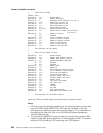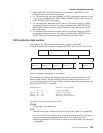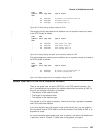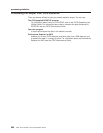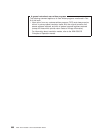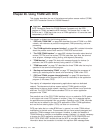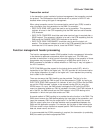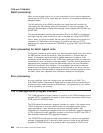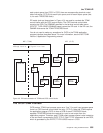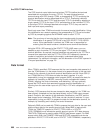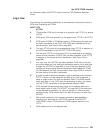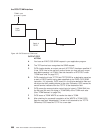
CICS with TCAM SNA
The CICS-TCAM interface has an enhanced data stream support that enables an
appropriate TCAM message control program (MCP) to control the SNA session. The
TCAMFET=SNA operand in DFHTCT TYPE=LINE allows TCTTEs to be specified
for SNA devices. You must be prepared to write an appropriate TCAM SNA
message control program to complement the CICS support and the SNA devices
attached to the system. In order to obtain a good operator interface, the CICS
application programs should be designed to inform the MCP of their intentions.
Thus, it is better to design the MCP and the application programs together.
Sample TCAM SNA MCPs are provided in CICSTS13.CICS.SDFHSAMP. The
second sample MCP (DFHSPTM2) uses the information passed in the CCB to
optimize the message flows to the actual logical unit. This represents
transaction-oriented processing.
TCAM provides data stream support for SNA devices running under CICS. Both the
SNA character string (SCS) and the 3270 data streams are supported.
To understand how CICS works with TCAM in an SNA environment, it is important
to understand the TCAM SNA structure. The device message handler (DMH) is the
logical unit in SNA terms. All data flow control (DFC), session startup and shutdown,
and response handling are provided in the DMH. There is no CICS control of these
SNA functions, so the application programmer need not be concerned with them.
For a more detailed discussion of the TCAM SNA functions provided, see the
ACF/TCAM System Programmer’s Guide
.
Protocol management
There may be many different protocols in an SNA network. The various protocols
are established on a session basis using the BIND image. You decide which
protocols to use with which SNA session, and you should understand the
requirements of the installation’s application programs before deciding on a specific
protocol.
Some of the more common of these SNA protocols are: bracket, half-duplex flip-flop
(HDX-FF), and half-duplex contention (HDX-CON). The enforcement of these
protocols is a function of the device message handler (DMH).
There are two methods of protocol management in a CICS-TCAM system:
v Device message handler control
v Transaction control.
These methods are discussed in the sections that follow.
Device message handler control
The device message handler method of protocol management is used when the
transaction does not need to know which device it is communicating with. Although
the communication control bytes (CCBs) are passed between CICS and TCAM,
they are not used to control the SNA session. All the protocol control is provided in
the DMH. You (the message handler writer, not the application programmer) choose
the appearance at the outboard LU.
CICS with TCAM SNA
692
CICS TS for OS/390: CICS Customization Guide



